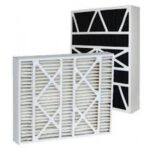The e-commerce landscape has evolved tremendously over the years, presenting entrepreneurs with an array of business models to choose from. At the heart of this evolution is the dichotomy between print-on-demand (POD) platforms and traditional e-commerce setups. Both models cater to unique market demands and offer distinct advantages for business owners. Understanding these models is crucial for anyone looking to carve out a profitable niche in the digital marketplace.
Print-on-demand has emerged as a revolutionary model that minimizes risk and investment for sellers. It is a method where custom products are printed and shipped only once a sale is made, eliminating the need for bulk purchases and large upfront investments. Traditional e-commerce, on the other hand, encompasses a variety of established online retail practices, including stocking and shipping products directly to consumers.
What is Print-on-Demand (POD)?
The concept of print-on-demand is fairly straightforward yet ingenious. It allows creators to design products that are then produced, usually by a third-party service, once an order is placed. The POD process involves several key steps, from the initial design submission to the final delivery to the customer. This model has effectively opened up new opportunities for artists, writers, and other creatives to sell custom-made products without the hassle of manufacturing and fulfillment.
The advantages of POD are considerable, especially for small businesses and startups. It removes the need for a sizeable initial investment, as there is no requirement to purchase inventory upfront. Furthermore, POD presents a lower risk compared to traditional e-commerce because unsold stock, which can lead to losses, is not a factor. Additionally, POD is inherently adaptable, making it ideal for niche markets and personalized products.
Exploring Traditional E-commerce
Traditional e-commerce operates on a different spectrum. It involves purchasing or manufacturing products in bulk, which are then stored in a warehouse or at home until they are sold and shipped to customers. This model has been the backbone of retail for years and continues to thrive thanks to the proliferation of online shopping.
The benefits of traditional e-commerce are noteworthy. This model often results in a lower cost per item since products are typically bought in large quantities at wholesale prices. It also grants the seller complete control over the quality and shipment of products, potentially leading to a better customer experience. Additionally, holding inventory allows for immediate shipment, which can be a decisive factor for many customers.
POD Platforms: An Overview
Diving into the world of POD platforms, there are some common features shared among them. Most provide integrated tools for product design, a marketplace to list and sell items, and partnerships with printing companies that handle the production and shipping. These platforms are designed to be user-friendly, allowing even novices to set up a virtual shop with ease.
Customization and the no inventory model are the pillars of POD. Sellers have the freedom to create unique products that reflect current trends or personal brand identity. The zero inventory aspect is particularly appealing as it cuts down on storage costs and eliminates the risks associated with overproduction. This means that the model is highly scalable; as the business grows, the system can handle an increase in orders without additional strain on the seller.
Print-on-Demand on Etsy
Integrating POD with Etsy offers a unique blend of creative marketplace and on-demand production. Etsy, known for its focus on handmade and custom items, is an excellent platform for print-on-demand products that cater to a customer base looking for something out of the ordinary.
However, using POD on Etsy comes with its own set of pros and cons. Sellers benefit from Etsy’s established audience and niche focus, which can lead to higher exposure and sales. On the flip side, competition is intense, and costs such as listing fees and transaction costs can add up. Moreover, although the platform fosters a community of makers and buyers, maintaining brand distinction can be challenging due to the sheer volume of products available.
Print-on-Demand and Shopify
Shopify has become synonymous with e-commerce success, and it’s no surprise that it also serves as a robust platform for POD businesses. With Shopify, entrepreneurs can create a custom storefront and use various POD apps that seamlessly connect them to suppliers.
The advantages of using Shopify for POD are extensive. It offers a high level of customization for the storefront, in-depth analytics, and marketing tools, as well as a vast app ecosystem for integrating various POD services. This flexibility enables sellers to create a brand-centric customer experience and streamline operations. Unlike marketplace-based platforms, Shopify stores allow for greater control over branding, customer interaction, and sales strategies.
Leveraging Print-on-Demand on Amazon
Amazon, the e-commerce giant, also offers POD services, opening the door to an extensive customer base and the prestige of selling on a globally recognized platform. Amazon’s POD services give sellers access to its massive shipping and customer service infrastructure.
The balance of POD and Amazon’s reach cannot be overstated. This combination provides sellers with an opportunity to capitalize on Amazon’s customer trust and streamlined fulfillment process. However, similar to Etsy, the vast number of sellers on Amazon can make it challenging to stand out. Additionally, sellers are subject to Amazon’s fees and policies, which can impact margins and business flexibility.
Comparison of POD Platforms and Traditional E-commerce
When comparing POD platforms and traditional e-commerce, several aspects come to the forefront. Cost investment and profit margins differ substantially; POD typically has a higher cost per item but lower upfront costs, whereas traditional e-commerce may yield better margins with higher initial investment.
Inventory and logistics are starkly different between the two models. POD platforms allow sellers to forego maintaining their own inventory, thus saving on storage and potential waste, while traditional e-commerce requires efficient inventory management and logistics planning. Product quality and customization are other areas of divergence — POD excels in customization, while traditional e-commerce might offer more consistent product quality due to hands-on oversight. Scalability and business control also vary, with POD platforms offering scalability without the need for handling logistics, whereas traditional e-commerce can offer more business control but may require a more complex scaling process.
Success Stories and Case Studies
Numerous successful POD businesses serve as testaments to the viability and potential profitability of the model. From creators who’ve turned their artwork into a globally sold apparel line to authors self-publishing best-selling books using POD services, the success stories are diverse and inspiring. These businesses often emphasize the importance of niching down and creating strong branding, which are lessons any e-commerce entrepreneur can benefit from.
Comparing these achievements to traditional e-commerce successes, we see many parallels and also distinct strategies. Traditional e-commerce successes often feature businesses that have mastered bulk purchasing, inventory management, and logistical efficiencies. They remind us of the power of scale and traditional retail principles in the online world.
Conclusion
In summarizing key points, it’s clear that both print-on-demand platforms and traditional e-commerce have their own set of advantages and considerations. POD platforms offer ease of entry, customization, and scalability without the need for handling inventory, whereas traditional e-commerce provides potentially higher profit margins, control over inventory and logistics, and the ability to ship products rapidly.
Final thoughts on choosing the right model for your business hinge on personal goals, resources, and market demand. Whether it’s the simplicity and creativity of print on demand on Etsy, the scalability of print on demand Shopify, or the broad reach of print on demand Amazon, entrepreneurs have powerful options at their disposal. The most successful businesses may find ways to blend elements of both models, leveraging the advantages of each to create a robust and resilient e-commerce enterprise.


